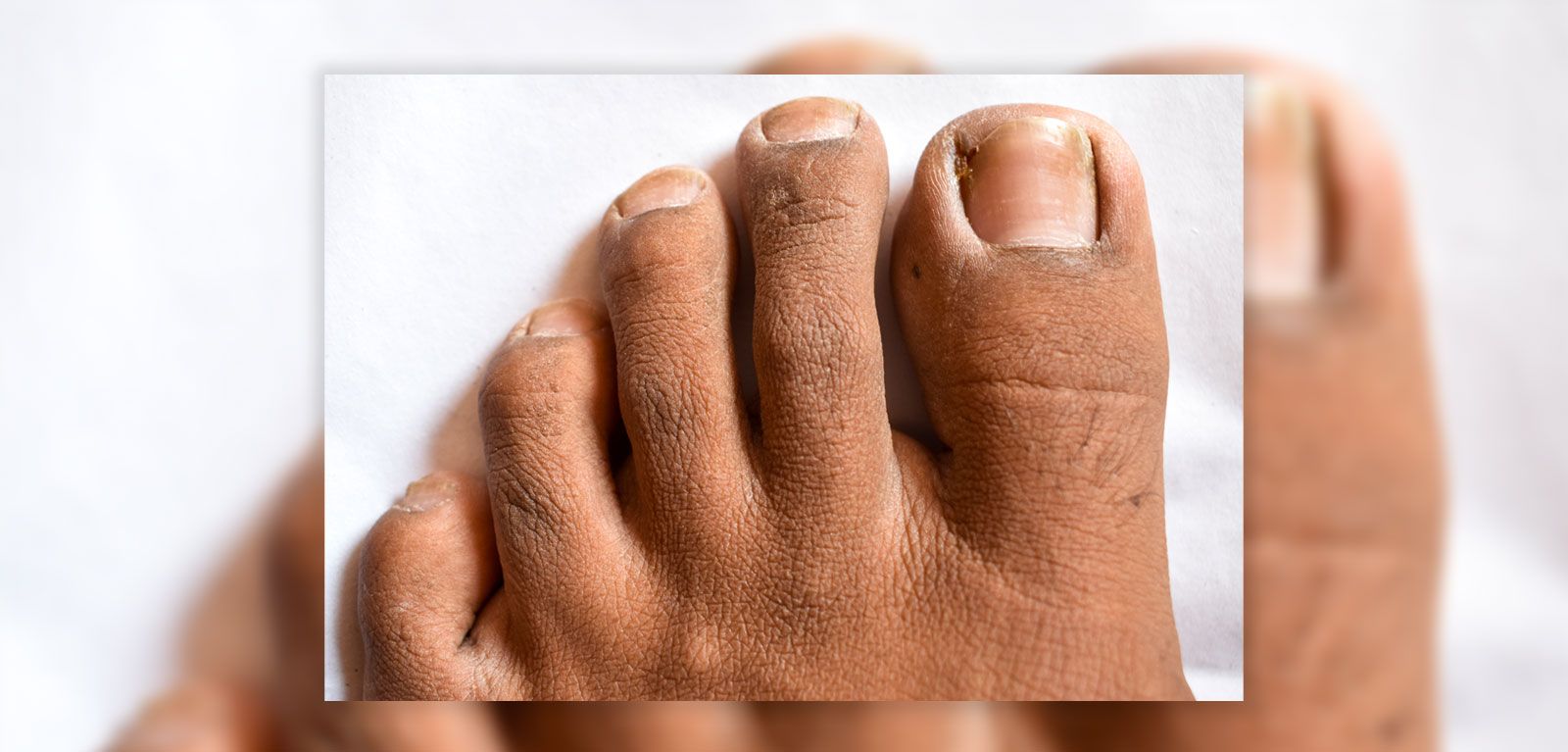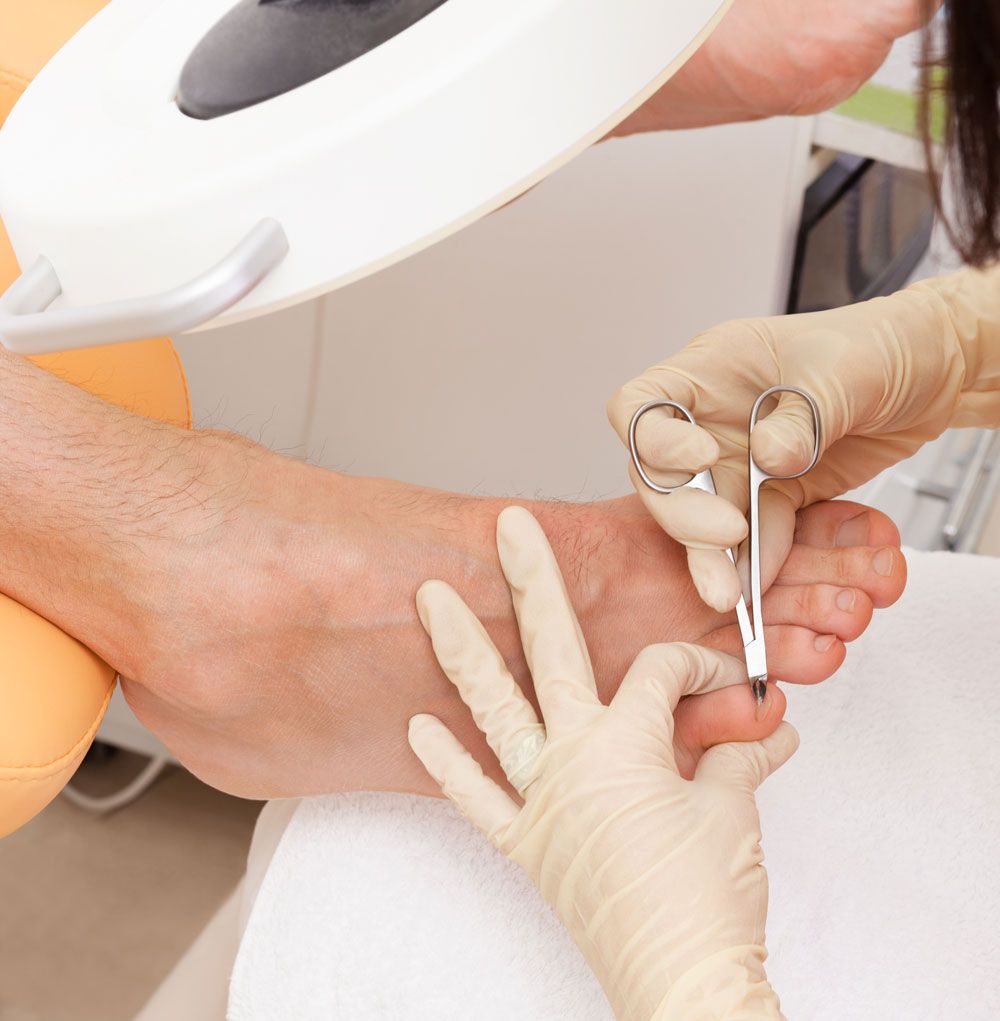Ingrown ToeNail.

Overview
Ingrown toenails are a common condition in which the corner or side of a toenail digs into the skin at the end or side
of the toe.The result is pain, inflamed skin, swelling and, sometimes, an infection. Ingrown toenails usually affect the
big toe. You will know you have an ingrown toenail because you will be able to see your nail growing incorrectly.
Instead of growing straight up over your toe, the nail will dig into the flesh on one or the other side of your toe.
Cause
- Improper trimming- Cutting toenails too short or not straight across
- Poorly fitting shoes
- Socks and stockings that are too tight
- Wearing shoes that crowd the toenails
- Injuring a toenail
- Having irregular, very curved toenails
- Nail infections
- Poor posture
- Improper foot hygiene, such as not keeping your feet clean or dry
- Genetic predisposition
Symptoms
You usually see them on a big toe but any toe can be affected. Symptoms include:
- Swelling
- Redness
- Pain
- Tenderness
- Pus
- Inflamed skin
- Infection
Treatments
Stage 1
- Warm water soaks – soak the foot in warm water four times a day.
- Wash the foot including the affected area twice a day with soap and water.
- Cotton-wick insertion in the lateral groove corner
Stage 2
- Topical antibiotic ointments combined with local anesthetic agents help to heal the toe faster and also provide pain relief by numbing the affected area.
Stage 3
- Ingrown nail surgery -removal of a nail, or a portion of a nail, that is covered by skin and causing pain and/or infection.

Home care / DIY care
-
Trim your nails often and correctly-Trim your toenails straight across with a proper toenail trimmer.
-
Wear proper footwear- Your toes need enough room to wiggle comfortably in your socks and shoes
-
Wear protective footwear- Avoid injuring your toes
-
Keep toenails at a moderate length.
-
Don't dig into your skin to try to pull out the ingrown nail-You could further damage your skin and increase your risk of infection.
-
Check your feet-If you have diabetes, check your feet daily for signs of ingrown toenails or other foot problems.
FAQs
What happens if you ignore an ingrown toenail?
Left untreated, ingrown toenails can become infected. A fungal infection can be very painful and requires antibiotics
to get rid of it. Your untreated ingrown toenail can even lead to a bone infection. An untreated infection can be
especially serious for patients with diabetes and lead to gangrene.
Why does an ingrown nail hurt so badly?
Basically, what happens is that your nail – made from hard, dead protein called keratin – curves as it grows, pushing
back into the skin of the toe to cause a pressure buildup, or puncturing the skin to trigger inflammation and pain.
When to see a doctor?
Experience severe discomfort in a toe, pus or inflamed skin that seems to be spreading.Have diabetes or another
condition that causes poor blood flow to the feet and you have a foot sore or infection.
How long can you go without treating an ingrown toenail?
Anyone who follows home care advice for ingrown toenails, but does not see any improvement within 2–3 days
should speak to a doctor. It is also important to seek medical attention if there are signs of an infection.
Is ingrown toenail surgery painful?
The minor surgery to remove an ingrown toenail is mostly painless, and if you follow the doctor's aftercare
instructions, your toe
best natural results
Elara has expertise in technological advances & their suitability, and adaptability to different subjects.
We strive to treat our patients with high quality affordable & excellent Skin and laser treatments. You will get that natural touch of treatment that you will hardly get anywhere with us.
We strive to treat our patients with high quality affordable & excellent Skin and laser treatments. You will get that natural touch of treatment that you will hardly get anywhere with us.
